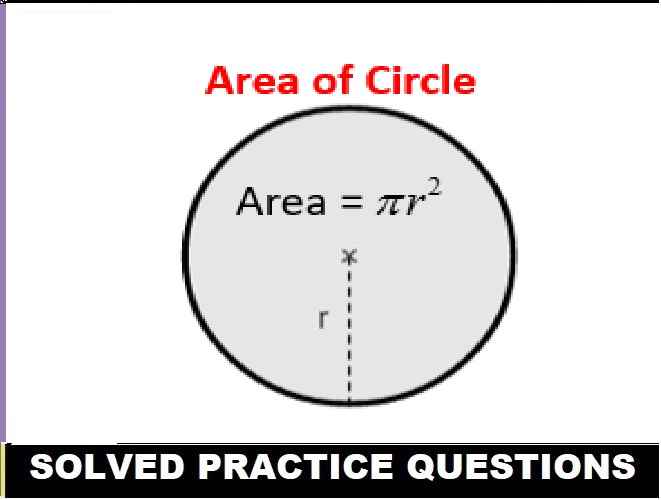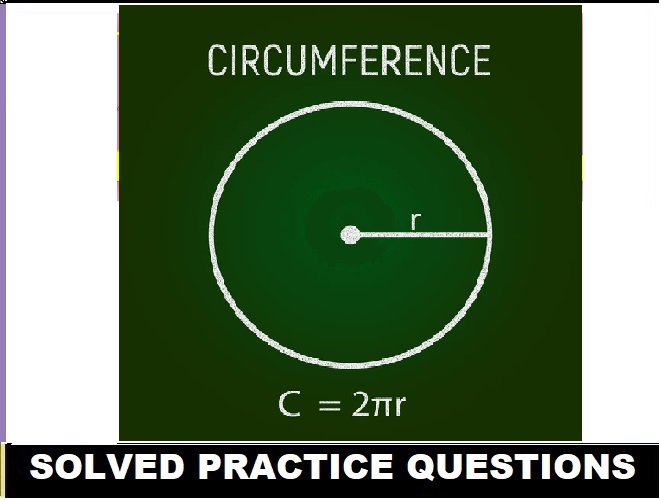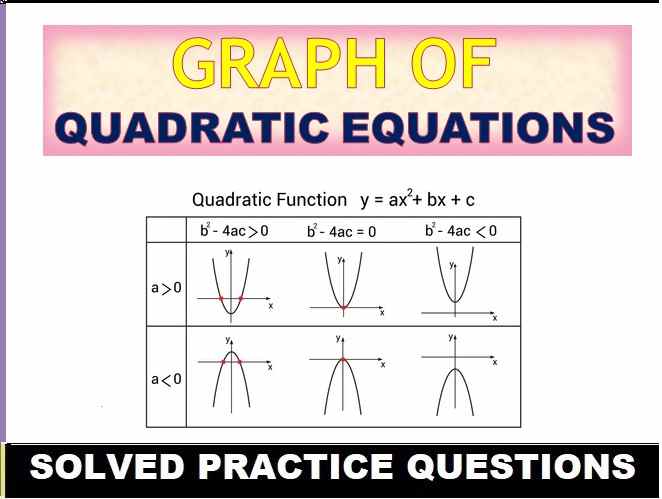Co-ordinate Geometry Class-9 Concise ICSE Maths Selina Solutions Chapter-26. We provide step by step Solutions of Exercise / lesson-26 Co-ordinate Geometry for ICSE Class-9 Concise Selina Mathematics by RK Bansal.
Our Solutions contain all type Questions with Exe-26 A, Exe-26 B, Exe-26 C to develop skill and confidence. Visit official Website CISCE for detail information about ICSE Board Class-9 Mathematics .
Co-ordinate Geometry Class-9 Concise ICSE Maths Selina Solutions Chapter-26
–: Select Topics :–
Exe-26 A, Co-ordinate Geometry Class-9 Concise ICSE Maths Selina Solutions
Question. 1
For the equation given below; name the dependent and independent variables
……………….
Answer 1:

Question. 2
Plot the following points on the same graph paper:
(i) (8, 7)
(ii) (3, 6)
(iii) (0, 4)
(iv) (0, -4)
(v) (3, -2)
(vi) (-2, 5)
(vii) (-3, 0)
(viii) (5, 0)
(ix) (-4, -3)
Answer 2:

On the graph paper, let us draw the co-ordinate axes XOX’ and YOY’ intersecting at the origin O. With proper scale, mark the numbers on the two co-ordinate axes.
Now for the point A(8,7)
Step I
Starting from origin O, move 8 units along the positive direction of X axis, to the right of the origin O
Step II
Now from there, move 7 units up and place a dot at the point reached. Label this point as A(8,7)
Similarly plotting the other points

Question. 3
Find the values of x and y if:
(i). (x – 1, y + 3) = (4, 4)
(ii). (3x + 1, 2y – 7) = (9, – 9)
(iii). (5x – 3y, y – 3x) = (4, -4)
Answer :3


Question. 4
Use the graph given alongside, to find the coordinates of the point (s) satisfying the given condition:
(i) The abscissa is 2.
(ii)The ordinate is 0.
(iii) The ordinate is 3.
(iv) The ordinate is -4.
(v) The abscissa is 5.
(vi) The abscissa is equal to the ordinate.
(vii) The ordinate is half of the abscissa.
Answer :4
(i) The abscissa is 2
Now using the given graph the co-ordinate of the given point A is given by (2,2)
(ii) The ordinate is 0
Now using the given graph the co-ordinate of the given point B is given by (5,0)
(iii) The ordinate is 3
Now using the given graph the co-ordinate of the given point C and E is given by (-4,3)& (6,3)
(iv) The ordinate is -4
Now using the given graph the co-ordinate of the given point D is given by (2,-4)
(v) The abscissa is 5
Now using the given graph the co-ordinate of the given point H, B and G is given by (5,5) ,(5,0) & (5,-3)
(vi)The abscissa is equal to the ordinate.
Now using the given graph the co-ordinate of the given point I,A & H is given by (4,4),(2,2) & (5,5)
(vii)The ordinate is half of the abscissa
Now using the given graph the co-ordinate of the given point E is given by (6,3)
Question. 5
State, true or false:
(i)The ordinate of a point is its x-co-ordinate.
(ii)The origin is in the first quadrant.
(iii)The y-axis is the vertical number line.
(iv)Every point is located in one of the four quadrants.
(v)If the ordinate of a point is equal to its abscissa; the point lies either in the first quadrant or in the second quadrant.
(vi)The origin (0,0) lies on the x-axis.
(vii)The point (a,b) lies on the y-axis if b=0.
Answer 5:
(i)The ordinate of a point is its x-co-ordinate.
False.
(ii)The origin is in the first quadrant.
False.
(iii)The y-axis is the vertical number line.
True.
(iv)Every point is located in one of the four quadrants.
True.
(v)If the ordinate of a point is equal to its abscissa; the point lies either in the first quadrant or in the second quadrant.
False.
(vi)The origin (0,0) lies on the x-axis.
True.
(vii)The point (a,b) lies on the y-axis if b=0.
False
Question. 6
In the following, find the coordinates of the point whose abscissa is the solution of the first equation and ordinate is the solution of the second equation
(i) 3 – 2x = 7; 2y + 1 = 10 – 2 1/2y.
(ii)…………….
(iii)………………
Answer 6:



Question. 7
In the following, the coordinates of the three vertices of a rectangle ABCD are given. By plotting the given points; find, in case, the coordinates of the fourth vertex:
(i) A(2, 0), B(8, 0) and C(8, 4).
(ii)A (4, 2), B(-2, 2) and D(4, -2).
(iii) A (- 4, – 6), C(6, 0) and D(- 4, 0).
(iv).B (10, 4), C(0, 4) and D(0, -2).
Answer 7:

After plotting the given points A(2,0), B(8,0) and C(8,4) on a graph paper; joining A with B and B with C. From the graph it is clear that the vertical distance between the points B(8,0) and C(8,4) is 4 units, therefore the vertical distance between the points A(2,0) and D must be 4 units. Now complete the rectangle ABCD
As is clear from the graph D(2,4)
(ii)A(4,2), B(-2,-2) and D(4,-2)

After plotting the given points A(4,2), B(-2,2) and D(4,-2) on a graph paper; joining A with B and A with D. From the graph it is clear that the vertical distance between the points A(4,2) and D(4,-2) is 4 units and the horizontal distance between the points A(4,2) and B(-2,2) is 6 units , therefore the vertical distance between the points B(-2,2)and C must be 4 units and the horizontal distance between the points B(-2,2) and C must be 6 units. Now complete the rectangle ABCD
As is clear from the graph C(-2,2)




Question. 8
A (- 2, 2), B(8, 2) and C(4, – 4) are the vertices of a parallelogram ABCD. By plotting the given points on a graph paper; find the co-ordinates of the fourth vertex D.
Also, form the same graph, state the co-ordinates of the mid-points of the sides AB and CD
Answer 8:

After plotting the given points A(2,-2), B(8,2) and C(4,-4) on a graph paper; joining B with C and B with A . Now complete the parallelogram ABCD.
As is clear from the graph D(-6,4)
Now from the graph we can find the mid points of the sides AB and CD.
Therefore the co-ordinates of the mid-point of AB is E(3,2) and the co-ordinates of the mid-point of CD is F(-1,-4)
Question. 9
A (-2, 4), C(4, 10) and D(-2, 10) are the vertices of a square ABCD. Use the graphical method to find the co-ordinates of the fourth vertex B. Also, find:
(i) The co-ordinates of the mid-point of BC;
(ii) The co-ordinates of the mid-point of CD and
(iii) The co-ordinates of the point of intersection of the diagonals of the square ABCD.
Answer 9:


Question. 10
By plotting the following points on the same graph paper. Check whether they are col linear or not:
(i) (3, 5), (1, 1) and (0, -1)
(ii) (-2, -1), (-1, -4) and (-4, 1)
Answer 10:

Question. 11
Plot point A(5, -7). From point A, draw AM perpendicular to the x-axis and AN perpendicular to the y-axis. Write the coordinates of points M and N
Answer 11:


Question. 12
In square ABCD; A = (3, 4), B = (-2, 4) and C = (-2, -1). By plotting these points on a graph paper, find the co-ordinates of vertex D. Also, find the area of the square
Answer 12:

Question. 13
In rectangle OABC; point O is the origin, OA = 10 units along x-axis and AB = 8 units. Find the co-ordinates of vertices A, B and C
Answer 13:


Co-ordinate Geometry Exe-26 B, Class-9 Concise ICSE Maths Selina Solutions
Question 1:
Draw the graph for each linear equation given below
(i) x = 3
(ii) x +3 =0
(iii) x -5 = 0
(iv) 2x-7 = 0
(v) y = 4
(vi) y + 6 = 0
(vii) y – 2 = 0
(viii) 3y + = 0
(ix) 2y – 5 = 0
(x) y = 0
(xi) x = 0
Answer 1









Question 2:
Draw the graph for each linear equation given below
(i) y = 3x
(ii) y = -x
(iii) y = – 2x
(iv) y = x
(v) 5x + y = 0
(vi) x + 2y = 0
(vii) 4x -y = 0
(viii) 3x + 2y = 0
(ix) x = – 2y
Answer 2






Question 3:
Draw the graph for each linear equation given below
(i) y = 2x + 3
(ii) y = 2x /3 -1
(iii) y = – x + 4
(iv) y = 4x – 5/2
(v) y = 3x/2 + 2/3
(vi) 2x – 3y = 4
(vii) …………..
(viii) ……………..
(ix) ……………..
Answer 3









Question 4:
Draw the graph for each linear equation given below
(i) 3x + 2y =6
(ii) 2x – 5y =10
(iii) x/2 + 2y/3 = 5
(iv) ………………..
Answer 4




Question 5:
For the linear equation, given above, draw the graph and then use the graph drawn (in the following case) to find the area of a triangle enclosed by the graph and the co-ordinates axes:
(i) 3x – (5 – y) = 7
(ii) 7 – 3 (1 – y) = – 5 + 2x.
Answer 5


Question 6:
For the pair of linear equations given below, draw graphs and then state, whether the lines drawn are parallel or perpendicular to each other
(i) y = 3x – 1 , y = 3x + 2
(ii) y = x – 3 , y = – x + 5
(iii) 2x – 3y = 6 , x/2 + y/3 =1
(iv) 3x + 4y = 24, x/4 + y/3 = 1
Answer 6




Question 7:
On the same graph paper, plot the graph of y = x – 2, y = 2x + 1 and y = 4 from x= – 4 to 3.
Answer 7

Question 8:
On the same graph paper, plot the graphs of y = 2x – 1, y = 2x and y = 2x + 1 from x = – 2 to x = 4. Are the graphs (lines) drawn parallel to each other?
Answer 8

Question 9:
The graph of 3x + 2y = 6 meets the x=axis at point P and the y-axis at point Q. Use the graphical method to find the co-ordinates of points P and Q.
Answer 9

Question 10:
Draw the graph of equation x + 2y – 3 = 0. From the graph, find:
(i) x1, the value of x, when y = 3
(ii) x2, the value of x, when y = – 2.
Answer 10

Question 11:
Draw the graph of the equation 3x – 4y = 12.
Use the graph drawn to find:
(i) y1, the value of y, when x = 4.
(ii) y2, the value of y, when x = 0.
Answer 11

Question 12:
Draw the graph of equation x/4+y/5=1 Use the graph drawn to find:
(i) x1, the value of x, when y = 10
(ii) y1, the value of y, when x = 8.
Answer 12

Question 13:
Use the graphical method to show that the straight lines given by the equations x + y = 2, x – 2y = 5 and x3+y=0 pass through the same point.
Answer 13


Exe-26 C, Co-ordinate Geometry Class-9 Concise ICSE Maths Selina Solutions
Question 1:
In each of the following, find the inclination of line AB
(i)…………….
(ii) …………………
(iii) ……………..
Answer 1
The angle which a straight line makes with the positive direction of x-axis (measured in anticlockwise direction) is called inclination o the line.
The inclination of a line is usually denoted by θ
(i)The inclination is θ = 45°
(ii) The inclination is θ = 135°
(iii) The inclination is θ = 30°
Question 2:
Write the inclination of a line which is:
(i) Parallel to the x-axis
(ii) Perpendicular to the x-axis
(iii)Parallel to the y-axis.
(iv) Perpendicular to the y-axis.
Answer 2
(i)The inclination of a line parallel to x-axis is θ = 0°
(ii)The inclination of a line perpendicular to x-axis is θ = 90°
(iii) The inclination of a line parallel to y-axis is θ = 90°
(iv) The inclination of a line perpendicular to y-axis is θ = 0°
Question 3:
Write the slope of the line whose inclination is:
(i) 0
(ii) 30
(iii) 45
(iv) 60
Answer 3

Question 4:
Find the inclination of the line whose slope is
(i) 0
(ii) 1
(iii) √3
(iv) 1/√3
Answer 4


Question 5:
Write the slope of the line which is
(i) Parallel to the x-axis
(ii) Perpendicular to the x-axis.
(iii) Parallel to the y-axis.
(iv) Perpendicular to the y-axis.
Answer 5

Question 6:
For the equation given below, find the slope and the y-intercept:
(i) x + 3y + 5 = 0
(ii) 3x – y – 8 = 0
(iii) 5x = 4y + 7
(iv) x= 5y – 4.
(v) y = 7x – 2
(vi) 3y = 7
(vii) 4y + 9 = 0
Answer 6



Question 7:
Find the equation of the line whose:
(i) Slope = 2 and y-intercept = 3
(ii) Slope = 5 and y-intercept = – 8
(iii) slope = – 4 and y-intercept = 2
(iv) slope = – 3 and y-intercept = – 1
(v) slope = 0 and y-intercept = – 5
(vi) slope = 0 and y-intercept = 0
Answer 7


Question 8:
Draw the line 3x + 4y = 12 on a graph paper. From the graph paper, read the y-intercept of the line
Answer 8
Given line is 3x + 4y = 12
The graph of the given line is shown below.

Clearly from the graph we can find the y-intercept.
The required y-intercept is 3.
Question 9:
Draw the line 2x – 3y – 18 = 0 on a graph paper. From the graph paper, read the y-intercept of the line.
Answer 9
Given line is
2x – 3y – 18 = 0
The graph of the given line is shown below.

Clearly from the graph we can find the y-intercept.
The required y-intercept is -6
Question 10:
Draw the graph of the line x + y = 5. Use the graph paper drawn to find the inclination and the y-intercept of the line.
Answer 10
Given line is
x + y = 5
The graph of the given line is shown below.


— End of Co-ordinate Geometry Class-9 Concise Selina Solutions :–
Return to – Concise Selina Maths Solutions for ICSE Class -9


